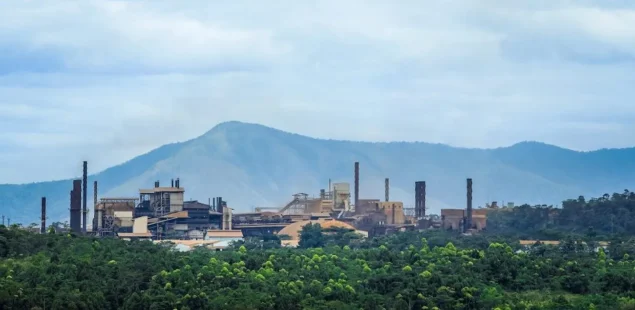
Current Zinc Price Trends
Zinc market has experienced notable fluctuations in early 2025, shaped by macroeconomic uncertainty, shifts in industrial demand, and evolving supply conditions. As of Q1 2025, the zinc price on the London Metal Exchange (LME) is averaging around $2,450 per metric ton, reflecting a modest recovery from the late-2023 lows of $2,300/t.
In India, zinc prices have remained slightly higher due to robust infrastructure spending and strong demand from the galvanizing sector, hovering near ₹225 per kg. In contrast, zinc price in the USA and UK has been more volatile due to sluggish manufacturing output and tight monetary policy.
Short-term price trends are being shaped by:
- Stabilization in global economic activity post-2024 slowdown.
- Chinese stimulus measures aimed at supporting construction.
- Moderate recovery in automotive and white goods manufacturing.
Zinc news outlets are closely monitoring these developments, especially in light of China’s dual role as the largest producer and consumer of zinc globally.
Historical Price Analysis
A review of zinc price history reveals recurring cycles influenced by global economic health, industrial demand, and mining output. Over the past decade, zinc prices have swung between $1,800 and $3,600 per ton, peaking in 2022 amid supply disruptions caused by energy shortages and post-COVID demand spikes.
Seasonal trends show higher prices during Q2–Q3, aligning with construction activity in the Northern Hemisphere. However, structural shifts — such as the decarbonization of industry and the transition to electric infrastructure — are reshaping long-term pricing dynamics.
Historically, zinc has been highly sensitive to energy prices, as smelting is power-intensive. The 2022–2023 energy crisis in Europe led to major production curtailments, especially in Belgium and Germany, pushing prices sharply upward. With energy markets stabilizing, production has resumed, easing some of the upward pressure.
Market Forecasts for 2025
Looking ahead, the zinc price prediction for 2025 varies depending on the source. Analysts generally forecast a trading range between $2,400 and $2,700 per ton, with the following influencing factors:
- Demand growth from Asia, especially India and Southeast Asia.
- Stability in Chinese real estate, which affects global zinc demand.
- Moderate expansion in mining and refining capacity.
Fitch Solutions forecasts an average zinc future price of $2,450/t for 2025, citing a balanced market with mild deficits in high-grade material. Meanwhile, S&P Global expects stronger upside in H2 2025 as Western economies reaccelerate.
Expectations of zinc price going up hinge on tight inventories and geopolitical risks. On the other hand, rising supply from Kazakhstan and South America could pressure prices downward.
Supply and Demand Dynamics
The global zinc supply is dominated by China, Australia, and Peru, while major consumers include galvanizing industries (60%), die-casting, and chemicals. In 2024, global refined zinc production was approximately 13.6 million tons, with a moderate increase expected in 2025.
Key factors shaping supply and demand include:
- Smelter restarts in Europe and ramp-ups in India.
- Environmental regulations that may limit future mine expansions.
- Energy costs, especially in high-consumption smelting operations.
On the demand side, infrastructure investment and automotive production remain critical drivers. Zinc’s corrosion-resistant properties make it essential for steel protection — a fact that underpins demand from India’s construction boom.
While overall demand is stable, any drop in housing or vehicle markets can quickly translate into zinc price dropping. Therefore, the balance of global supply-demand remains fragile, with significant upside or downside risks.
Regional Market Insights
India is a standout in zinc consumption growth, driven by large-scale infrastructure programs like Bharatmala and Smart Cities. Domestic miners like Hindustan Zinc dominate local supply, and India is largely self-sufficient in refined zinc, with domestic production led by Hindustan Zinc.
In the USA, demand is stable but faces headwinds from construction slowdown and high interest rates. However, the Inflation Reduction Act is expected to support longer-term demand through green infrastructure and energy projects.
The UK zinc market is recovering from import disruptions and energy-related cost pressures on European smelters. Imports from the EU and Norway fill the gap, but local prices remain elevated due to supply chain constraints and weak pound sterling.
These regional dynamics contribute to varied zinc price expectations, making localized market analysis crucial for investors and stakeholders.
Investment Considerations
For investors, zinc metal offers a cyclical opportunity with long-term support from industrial growth and decarbonization trends. However, volatility is a key risk, driven by economic cycles, energy prices, and policy changes.
Key investment themes:
- Green infrastructure and renewable energy storage will drive demand for galvanized steel and die-casting applications.
- Recycling and secondary zinc may offset some primary demand growth, but not significantly before 2030.
- Zinc futures and ETFs (like the WisdomTree Zinc or NYMEX zinc contracts) offer exposure but require careful timing.
Current sentiment suggests cautious optimism. While zinc price is falling compared to 2022 peaks, the downside appears limited in a structurally supportive demand environment. For risk-averse investors, exposure via diversified mining stocks may be preferable to direct commodity bets.
FAQ
What is the future of zinc?
Zinc’s future remains tied to industrial growth, infrastructure development, and green energy expansion. As a critical input in galvanization and alloy production, zinc is essential for modern construction and automotive sectors. Over the next decade, demand is projected to grow steadily, particularly in Asia and through climate-focused investments.
Why is zinc going down?
Zinc price is going down primarily due to oversupply in certain regions, macroeconomic headwinds, and a cooling in Chinese construction. Increased smelter activity and lower-than-expected demand recovery have added downward pressure, though prices may stabilize as inventories normalize.
Why is there a zinc shortage?
Localized zinc shortages have emerged due to past smelter shutdowns (especially in Europe) linked to high energy prices. Environmental regulations have also delayed new mine developments. While global supply is recovering, refined zinc suitable for high-end applications remains tight in some regions.
What is the prediction for zinc in 2025?
Most forecasts put the zinc price prediction for 2025 in the $2,400–$2,700/t range. The market is expected to be relatively balanced, with slight deficits possible if demand surprises to the upside. Regional differences, energy costs, and policy changes will remain key price drivers.



